Exhibitors

Arkhangelsk Region
The Arkhangelsk Region stand presents the Arkhangelsk Support Zone, which includes a set of mutually linked projects in the transport and logistics sector that focus on the industrial development of the Arctic and the development of the Northern Sea Route:
– The construction of the Belkomur railway and a new deep-water seaport in Arkhangelsk.
– The construction of a mining and processing plant that will extract and process lead-zinc ores from the Pavlovskyoye deposit on the Novaya Zemlya archipelago.
– The establishment of the Arkhangelsk Production and Logistics Complex of the Russian Ministry of Defence.
– The development of timber industry and innovative shipbuilding territorial clusters in the Arkhangelsk Region.
– The establishment of a priority socioeconomic development area in the Onezhskoye municipality.
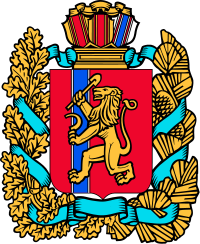
Krasnoyarsk Territory
The Krasnoyarsk Territory booth will present a project to create the Taymyr-Turukhan Support Zone, which the territory’s Arctic municipalities have joined. A plasma TV will broadcast videos about the Krasnoyarsk Territory, the establishment of the support zone, and the Universiade-2019 to be held in Krasnoyarsk. The booth will present printed materials about industrial enterprises that work in the Taymyr-Turukhan Support Zone and about territories. In addition, the booth will offer Universiade-2019 souvenirs.

Murmansk Region
The Murmansk Region fully falls within the land area of the Russian Federation’s Arctic zone and is part of the Barents Euro-Arctic Region.
Its area covers 144,900 square metres and the population as of January 1, 2017 was 758,000.
The region has an advantageous geographic location, a rich resource base, well-developed industrial, energy, scientific, educational and transport infrastructure.
The nuclear ice-breaker fleet which accompanies vessels via the Northern Sea Route is based in the Murmansk seaport (ice-free and deep-water).
The Northern Fleet which ensures the protection of the country’s state border is based in the region.
Taking into account its competitive advantages, the Murmansk Region is ready to test the territorial cluster approach to the Arctic’s development as a pilot region, having formed the Kola Support Zone of Development.

Nenets Autonomous District
The Nenets Autonomous District is fully part of the land territories of the Russian Federation’s Arctic zone.
The district has rich reserves of hydrocarbons, solid minerals, and semi-precious stones. Cumulative oil production amounts to 218.1 million tonnes, while gas production totals 5.5 billion cubic metres. The degree of depletion of the explored oil reserves has reached 21.9%, while that of gas reserves is 1.1%.
Modern infrastructure is being built for the additional exploration, production, and transportation of oil, gas, and minerals: the Naryan-Mar – Usinsk road is being completed.
The reconstruction of airports in Naryan-Mar and Amderma will connect the district with the ‘mainland’.
A deep-water port in Indiga Bay in the Barents Sea will provide access to the world ocean, while the Sosnogorsk-Indiga railway will transport timber, mineral, gas, and oil resources.
These competitive advantages, which are reflected in the formation of the Nenets Support Zone, will serve as a powerful start for the effective development of the Russian Arctic.

Republic of Komi
As part of an exhibition for the ‘Arctic: Territory of Dialogue’ International Arctic Forum, the Republic of Komi is preparing a video that reflects the priority projects being implemented and proposed for implementation as part of the Vorkuta Support Zone.
They include:
• the Belkomur project (the Solikamsk-Gayny-Syktyvkar-Karpogory-Arkhangelsk railway);
• mining industry projects – the development of Mine Fields No. 1 and No. 3 of the Usinskoye coal deposit;
• a sanitary aviation project to ensure the timely provision of emergency medical aid to citizens residing in hard-to-reach areas of the Republic of Komi;
• a project to develop information and telecommunications technologies – the construction of a fibre-optic communications line along the coast of the Arctic Ocean with diversions to populated areas;
• youth cluster projects as well as scientific research carried out by higher educational institutions of the Republic of Komi.

Republic of Sakha (Yakutia)
A proposal has been made to establish the North Yakutia Support Zone (NYSZ) in the Republic of Sakha (Yakutia) with its rich mineral resource base and unique natural potential. The goal of the NYSZ is to promote the improved efficiency and diversification of the Arctic Zone economy with a focus on developing the Northern Sea Route through the integrated development of the Arctic and northern territories of the Republic of Sakha (Yakutia). In order to develop an effective transport and logistics system and organize the production and advanced processing of raw materials, 7 mineral resource centres are to be established and ‘anchor’ backbone projects are to be implemented in the NYSZ:
– Construction of the high-tech Zhatay Shipyard;
– Reconstruction and modernization of the Tiksi Seaport.
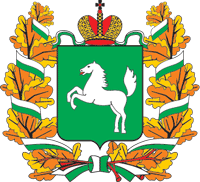
Tomsk Region
The Tomsk Region stand will present equipment and products to be used in harsh Arctic conditions:
– A sample of an automatic ultrasonic weather station (IMCES SB RAS)
– RemTEK electric drives of SPA Tomsk Electronic Company for remote and local control of stop as well as shut-off and control valves of various diameters and pressure in the chemical, oil, gas, and energy industries.
– Cryogels (Institute of Chemicals and Oil of the Siberian Branch of the Russian Academy of Sciences). Designed for equipping the foundations of oil and gas wells; strengthening soils during the construction of gas pipelines; creating additional safety barriers for the disposal of toxic and radioactive waste.
– Clothing that can withstand, temperatures regime up to -70. Maria Company
Information products.

Yamalo-Nenets Autonomous District
The Yamalo-Nenets Autonomous District is fully located within Russia’s Arctic zone. It’s Russia’s fuel and energy backbone, producing 14% of the country’s liquid hydrocarbons and more than 80% of its gas.
The investment projects in Yamal are not only the biggest in the country, but are also among the most promising in the world. Their total potential is estimated at USD 123 billion by 2020.
The Yamal LNG plant, which is the only one of its kind in the Arctic, will launch operations this year. An international airport is already functioning. The new Arctic seaport Sabetta, located in the middle of the continental Northern Sea Route artery, is accepting ships.
More than 20 major industrial projects are being implemented in the region. Infrastructure is also being built: the Yamal-based ‘Arctic Energy’ project includes the construction of the Northern Latitudinal Railway and the Obskaya-Bovanenkovo railway line with access to the Sabetta port and the world ocean. The railway will be built exclusively from Russian-made materials.

St. Petersburg
St. Petersburg has a concentration of significant scientific research, production, educational, and human resource potential in studying and developing Arctic territories.
New icebreakers, tankers, and drilling platform supply vessels are built there and major fuel and energy companies that have experience extracting hydrocarbons on the shelf are based in the city.
Educational programmes are implemented at Admiral Makarov State University of Maritime and Inland Shipping and State Marine Technical University of St. Petersburg.
Since 2004, the city has been home to the Maritime Council under the Government of St. Petersburg under which the Polar Commission for the Coordination of Arctic Development Affairs was established in 2012.
The Arctic Youth Competence Centre and the Arctic Infocommunications Centre were established in 2016.
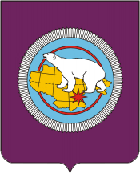
Chukotka Autonomous District
A socioeconomic development strategy for Chukotka was adopted ten years ago. Its main goal was to develop mining industries. The roadmap for the long-term development of Chukotka is defined by two projects: Baikma with 27 million tonnes of cooper (third in the world) and 2,000 tonnes of gold (fourth in the world), and the Beringovsky coal deposit from which products are to be exported to countries of the Asia-Pacific region. All the projects are energy intensive. The Chukotka District has drafted an energy system development plan that includes the construction of a floating nuclear power plant, energy centres, and the modernization and construction of power lines. Connecting the fields to big energy will enable companies to revise their plans and develop further.
For those who live here, the success of Chukotka signifies the success of each family and each resident in the most ordinary, everyday understanding: the opportunity to raise children and realize themselves in any undertaking. People who want to do business here and contribute to the region’s development are always welcome.

The First Ore Mining Company
JSC The First Ore Mining Company (a mining division enterprise of the Rosatom State Corporation) is implementing a project to establish a northern mining and processing plant that will extract and process lead-zinc ores from the Pavlovskoye deposit. The location of the Pavlovskoye project is Yuzhny Island in the Novaya Zemlya archipelago of the Arkhangelsk Region.
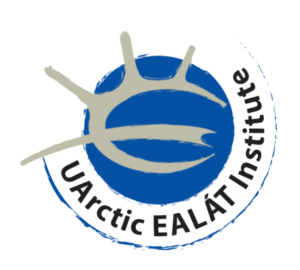 |
 |
 |
 |
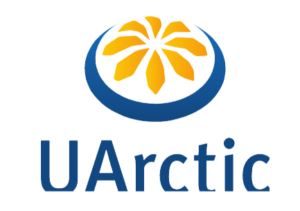 |
 |
EALLU: Arctic Indigenous Cuisine
The Arctic Council project EALLU: Arctic Youth, Climate Change and Food Culture showcases the potential for economic development in the Arctic based on indigenous peoples’ knowledge and entrepreneurship. This exhibit informs about the traditional knowledge embedded in Arctic food systems and its potential for community development. Traditional foods and cooking technologies will be demonstrated. EALLU has engaged Arctic Indigenous youth, including Sámi from Norway, and Nenets, Evenki, Even and others from Russia. Many of our representatives come from reindeer herding families. Come meet us and taste Arctic foods, provided by the International Centre for Reindeer Husbandry and their partners!

